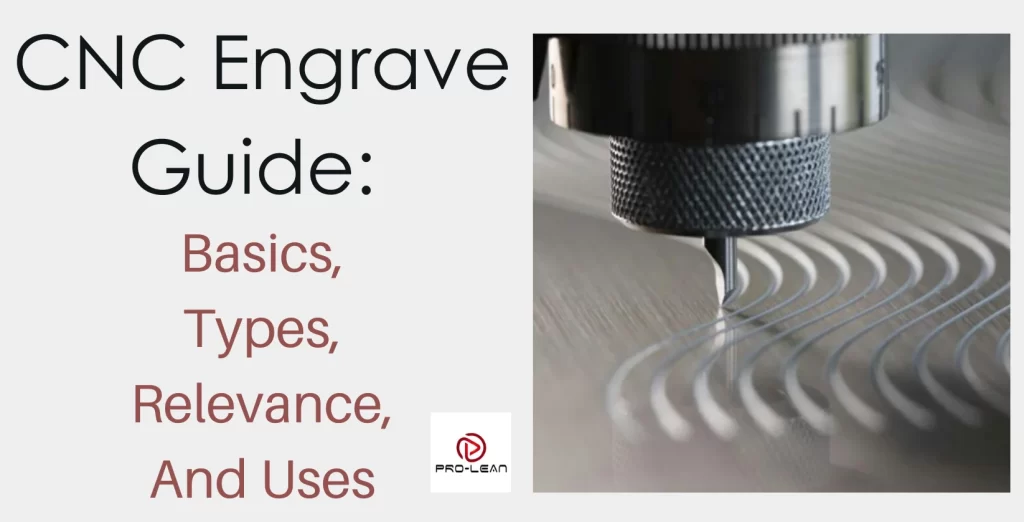
CNC engrave
Engraving, which later advanced to CNC engraving, is an ancient manufacturing technology with roots in Northern Italy and the Rhine Valley in Germany. Technologicial advance brought computer numerical control (CNC), which merged with engraving to create a highly effective solution that creates logos and designs on materials.
The process starts with a CAD design that the machinist executes on different parts of materials – Wood, metals, and plastic among others.
Akin to other CNC machining processes, CNC engraving is accurate, reproducible, and fast. It may appear and sound expensive and high-maintenance, but those are the trade-offs for a valuable process for general signage, jewelry-making, and industrial signage industries.
Indeed, anyone who requires embedded marks and patterns on their products need to know how to CNC engrave. It gives them a platform to identify the ideal solutions and demand the best services. With this knowledge, they can easily identify and partner with a professional CNC engraving service provider like ProleanTech.
This article is about CNC engraving, its applications, materials used, and tips for a successful process. Read on for details.
What Is CNC engraving?
CNC engraving is a high-speed process of applying logos and patterns on a material performed on computer numerical control-based machines. This process may be done for either industrial or artistic reasons. It is performed by sign-makers in what is popularly termed as engraving with a CNC router.
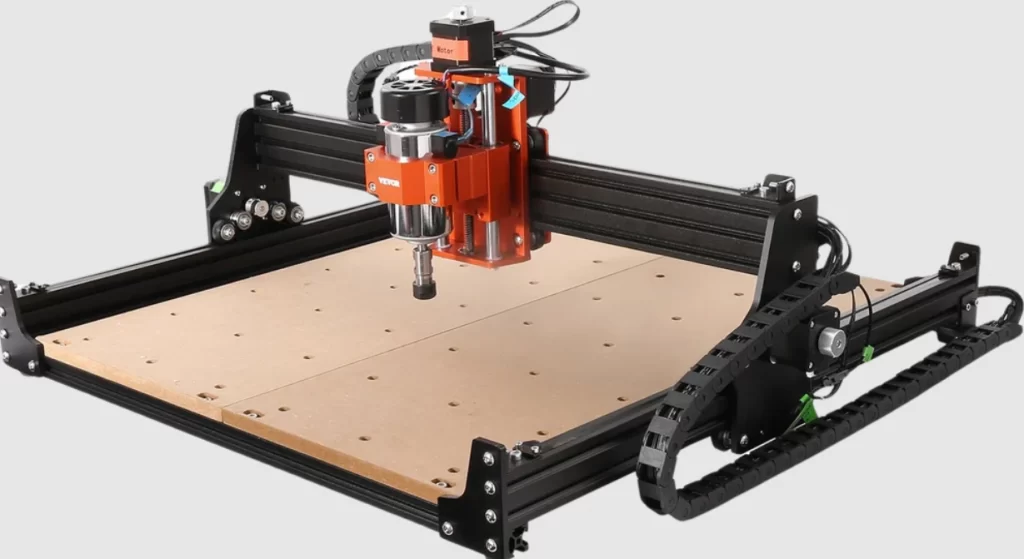
A CNC router
As a CNC-based process, engraving can be supported by a wide range of CNC machines. However, dedicated CNC engraving machines are recommended for their extra capabilities to make the engraving process more effective. An example is the high-speed spindle of these special machines.
But how exactly does one CNC engrave?
How CNC Engraving Works
The CNC engraving process involves a series of steps: Preparing the CAD design, preparing the CNC engraving machine, testing the setup, CNC engraving, and process finalization.
Each of these steps is critical to the quality of the CNC engraved part. Following them keenly contributes to the tight tolerances of up to ±0.0002″ (0.005mm) in the CNC machining processes.
Here are the steps to CNC engrave in more detail:
Step 1: The CAD Design and G-code
For the computer-controlled machine to carve out the desired design or logo, designers are tasked with creating a CAD design. This design will then be fed to the CNC engraving machine in the form of a program.
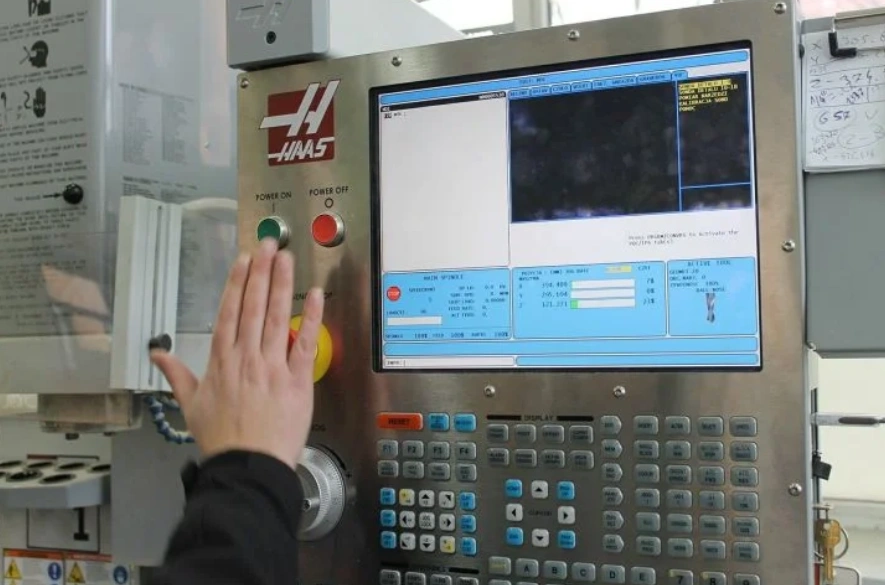
CNC programming
AutoCAD and CorelDRAW are some prominent CAD software solutions. They help in CNC engraving design and optimization. The design is then imported from the computer to the CNC engraving machine.
Before this importation, the design code must be converted to a version the CNC machine can decipher. CAM software does that important job. Referred to as the G-code, these instructions direct the machine and its cutting tool on depth of cutting, cutting speed, and such details.
Step 2: The Machine Setup
One step to the engraving process, the machine is prepared for the work. This step entails firml securing the material to be engraved on the machine. Setup also involves choosing the engraving tool and fixing it on the machine.
Tool choice depends on the level of engraving details required and the type of material being engraved.
Step 3: The CNC Engrave Test Run
Test runs are routine for any CNC machining operation. A CNC engrave test run helps determine the functionality of the machine and the exact cut quality. Choose a separate workpiece of the same material and use it for this test. Proceed to the next step if all is satisfactory.
Step 4: The CNC Engraving Process
The CNC metal engraver, wood engraver, or plastic engraver can now proceed to cut the material. The machinist maintains close attention to the process, even though it is automated.
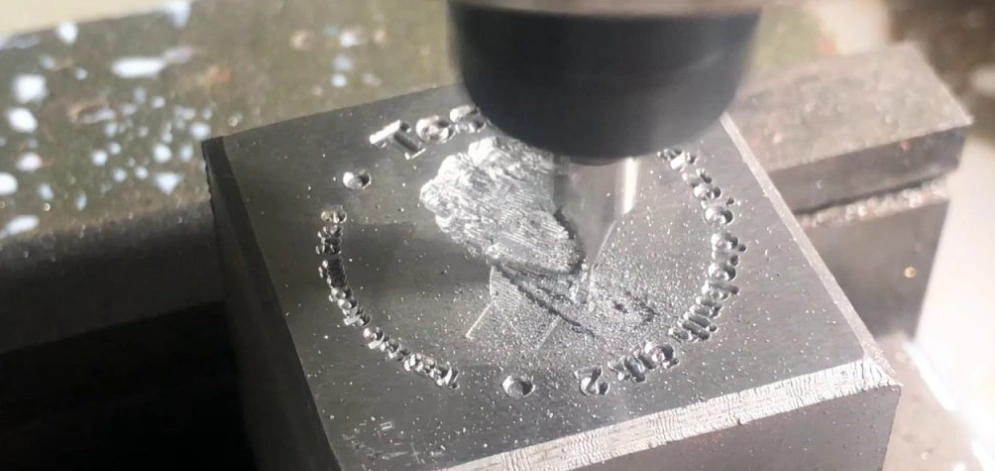
The engraving process
Potential issues that make this human monitoring necessary are tool breakage, cutting inaccuracies, and erroneous cutting depths. After the programmed runs are complete, the best metal engraving machine stops, prompting the user to check and remove the engraved part.
Step 5: The Finishing Steps
The engraved part may require some post-machining processes, but this depends on the technique used and the material. Brushing off debris and cleaning the product are common finishing activities. Polishing may also be done for enhanced visual appeal.
The experienced CNC Machining service provider caps it all with quality control that focuses on essential aspects such as depth of cut, surface finish, and accuracy of cut.
Try Prolean Now!
Different Types Of CNC Engraving
CNC engraving is available as CNC Laser Engraving, CNC Diamond Drag Engraving, and CNC Rotary Engraving. Each of these technologies has its advantages and drawbacks, which the manufacturing process must consider according to materials, manufacturing needs, and finish quality.
The desired cost-effectiveness and precision can also guide on the type of CNC engraving to use.
CNC Laser Engraving
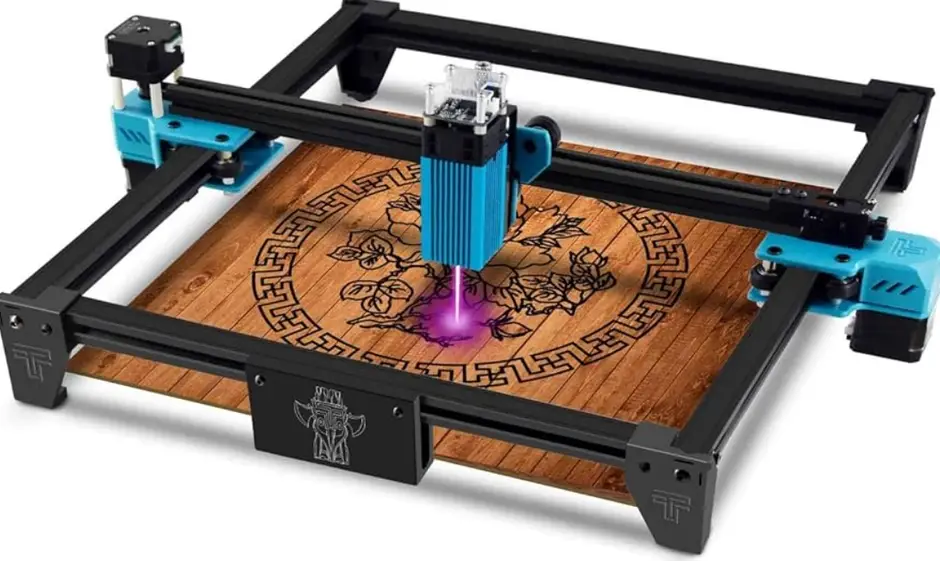
CNC laser engraver
The CNC laser engraving machine is characterized by a strong laser beam. This laser beam removes material from the workpiece through a process called sublimation. The laser head is accurately controlled by the machine’s embedded CNC system.
CNC Diamond Drag Engraving
As you can already deduce from the name, the CNC diamond drag machine features a diamond-tipped engraving tool. The tough diamond tip makes light work of most materials, scratching off the desired outline and depth as instructed by the CNC system.

Diamond drag engraving
CNC Rotary Engraving
For the CNC rotary engraving machine, the highlight is its rotating cutting tool. The flute-shaped surface of the tool helps generate the engraving swiftness. The tools for this machine come as either V-shaped or rounded. The CNC rotary engraving machine is very recognizable from the spindle mechanism.
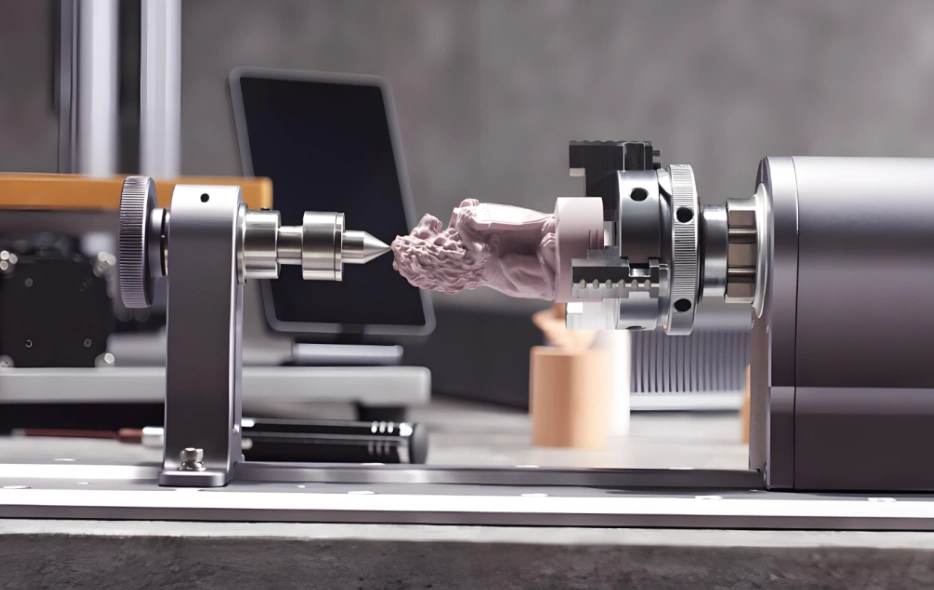
CNC rotary engraving
Different CNC Engraving Material Options
We mentioned materials in the above section, but now look at the factor in more detail. That’s because the choice of the material for CNC engraving hugely affects the tool wear, engraving precision, and product’s final look.
Whether metal, plastic, or wood, the motivation is the envisaged results, cost of the material, and machining ease, among others.
Let’s briefly discuss the main applicable materials.
Can A CNC Machine Engrave Metal?
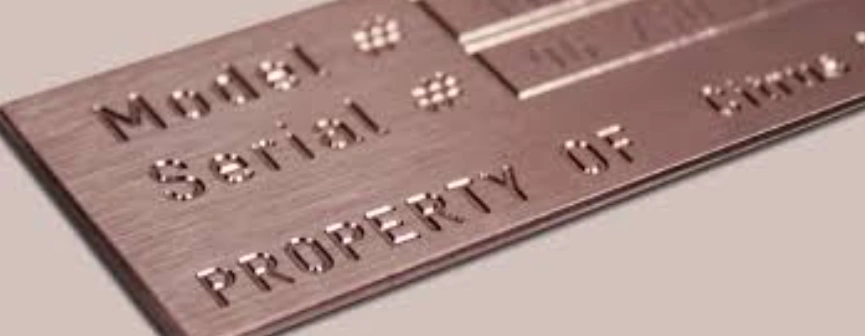
Metal CNC engraving
Yes, Metal is a popular choice for engraving for its unmatched machinability and capability to retain details. There are many options, each with a particular value to CNC engraving projects. If you are after lightweight engraved parts, aluminum is an ideal material. Brass is one of the best options for attractive parts.
Other metals regulalry used for CNC engraving are aluminum, copper, and stainless steel.
Plastic – Versatile And Easy To Machine
Plastics such as ABS and acrylic are easy to CNC-machine, hence popular for CNC engraving projects. Their versatility is evident in the range of colors and surface finishes available. Custom parts and prototypes are the leading products of CNC engraved plastics.

CNC engraved plastic
Wood’s Appeal And Value
Wood is one of the conventional materials you can decide to CNC engrave. Naturally appealing, the material produces warm and valuable engraved parts. These parts are mostly for decorative and custom parts. Engraved items can be produced from options like cherry, walnut, and maple.
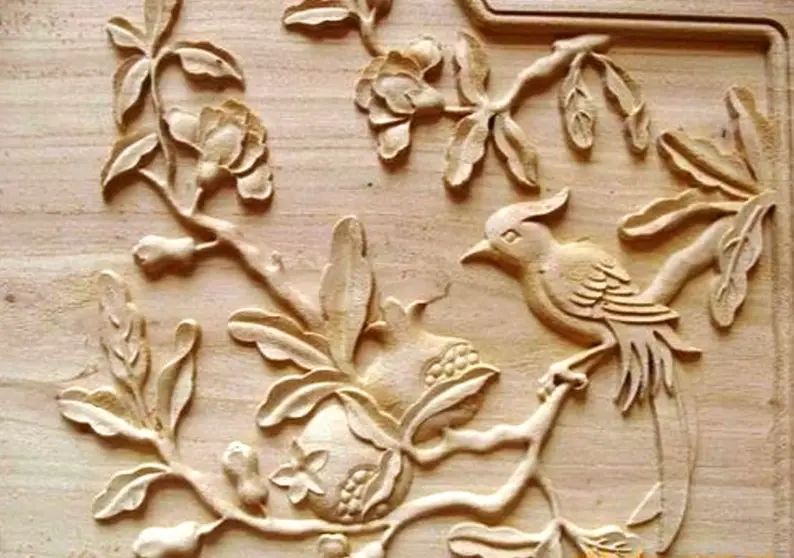
CNC engraved wood
Try Prolean Now!
The Advantages Of CNC Engraving
CNC engraved parts are precise and visually appealing. For a professional company that is experienced in how to CNC engrave, reproducing exact parts with the same efficiency is not a problem.
Modern manufacturers appreciate the role of CNC in industry applications and are using CNC engraving for several reasons.
Here are the advantages of CNC engraving they are considering:
Accuracy
Precision is one of the advantages of CNC engraving. CNC machining parts or designs from this process are original and detailed. A CNC engraving machine can produce numerous parts without losing these elements.
Fast Process
CNC engraving is also a swift process that can be used to produce numerous parts. As long as the machine is in good condition and the CNC program is set, you can get the required parts ready faster than in the conventional process.
Versatile Method
Other than speed and accuracy, CNC engraving is also very versatile. You can use it on different materials, shapes, and sizes. The resulting designs can be complex or simple, all depending on the user’s requirements.
Disadvantages Of CNC Engraving
Accuracy, speed, and versatility aside, CNC engraving also has some shortcomings. Businesses should recognize issues such as maintenance requirements, high investment cost, and need for skilled machinists.
Here are the disadvantages of this process in detail:
High Initial Cost
CNC engraving can be an expensive venture, particularly if you consider the cost of the machines. Some industrial-grade CNC routers cost over $100,000, which is not little money by any means.
High Maintenance And Repair Requirement
Modern cnc engraving machines for precision can be complicated with many systems. Maintaining and repairing these machines can be strenuous, complicated, and expensive.
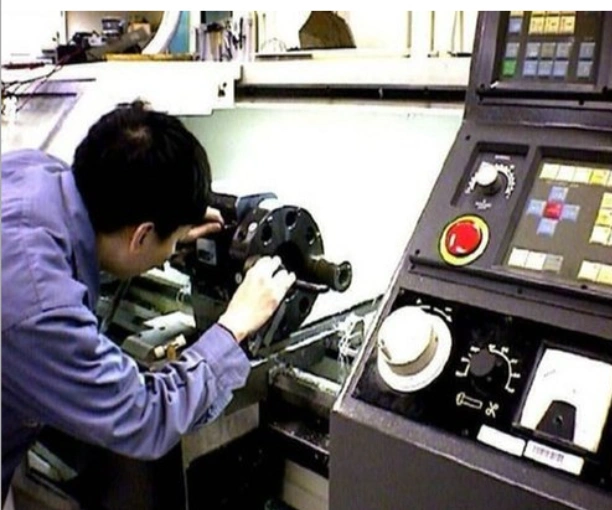
CNC router repair
Requires Skilled Users
Some of the requirements of a CNC engraving machine operator are deep understanding of the CNC router working, ability to read design blueprints, and machine troubleshooting skills. Machine maintenance is also part of the job description. These are not skills for a regular machine user.
The Applications Of CNC Engraving
Many industries use CNC engraving services to achieve various goals. Those that immediately come to mind are automotive and industrial signage, but there are many others.
The brief exploration of some applications of CNC engraving below shows that many industries leverage on the aesthetic and functional values of CNC engraved items.
Engraving With CNC Router In The Automotive Industry
CNC engraving is a noticeable process in car manufacturing. It is commonly used in markings on various parts. A perfect example is in the inscription of calibration marks on systems and serial numbers on the chassis and engine block.

Automotive CNC engraving
Industrial Signage Engravings
This is another popular area for CNC-engraved items. These wear-resistant markings are used for name tags, direction signs, and name plates.
CNC Engraving For The Jewelry Industry
As part of arts and crafts based on CNC engraving, the jewelry industry has advanced significantly. CNC engraving for customized jewelry is recognized for durability, details, and accuracy that capture artistic moments and emotions.
CNC Engraved Prototypes
Complex prototype designs can be easily produced through CNC engraving technologies. For product engineers, this is not only a cost-saving strategy, but also a fast means to different types of products.
Ideas For Successful CNC Engraving
Achieving quality CNC engraving results requires more than just choosing the best metal engraving machine. The best CNC engraving service providers focus on tool quality, material selection, and the design.
ProleanTech engraving experts are knowledgeable in materials science and how the different options apply for the process. They can share some times and explain how quality CNC Precision Machining enhances CNC engraving results.
Consider these expert ideas as you plan to CNC engrave your next parts:
- Choose the cutting tools according to the material to CNC-engrave and overal design requirements
- Always prepare the material adequately to get rid of dust, oil, rust, and other surface imperfections
- Insist on the right CNC engraving technologies to get the best engraving details
When you partner with a renowned professional CNC engraving company, these best practices are the norm. You never have to worry about adherence to the correct CNC Machining Cutting Speed and Feed Rate or use of quality materials.
Contact us and get your quote now!
Conclusion
As we have seen, the repeatability, cleanliness, and accuracy of CNC engraving technologies is irresistible for many industries. Whether you are in automotive, industrial signage, or medical fields, there’s always a way engraving with cnc router can help.
When you need a professional touch, ProleanTech is there to answer. We are a regularly-referred company, equipped with world-class engraving machines. We can customize the CNC engraving solution to the highest level.
FAQs
What does CNC stand for?
CNC stands for Computer Numerical Control, which is an automation technology for engraving and other types of precision machining.
Which is better, a CNC or laser engraver?
The choice depends on preference. While a CNC can make deeper precise cuts in different materials, a laser engraver suits shallow cuts in softer materials.
What is the difference between raster and engrave?
The difference is that while raster is based on dots, engrave entails material removal along defined paths.
What is the best format for engraving?
The best format for engraving provides accurate path data, so options such as SVG and DXF are the best.

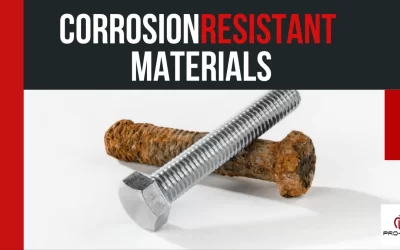
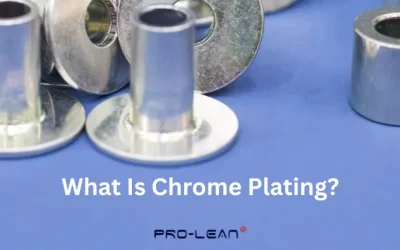
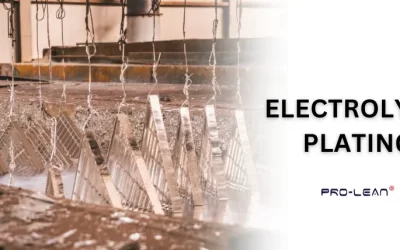
0 Comments